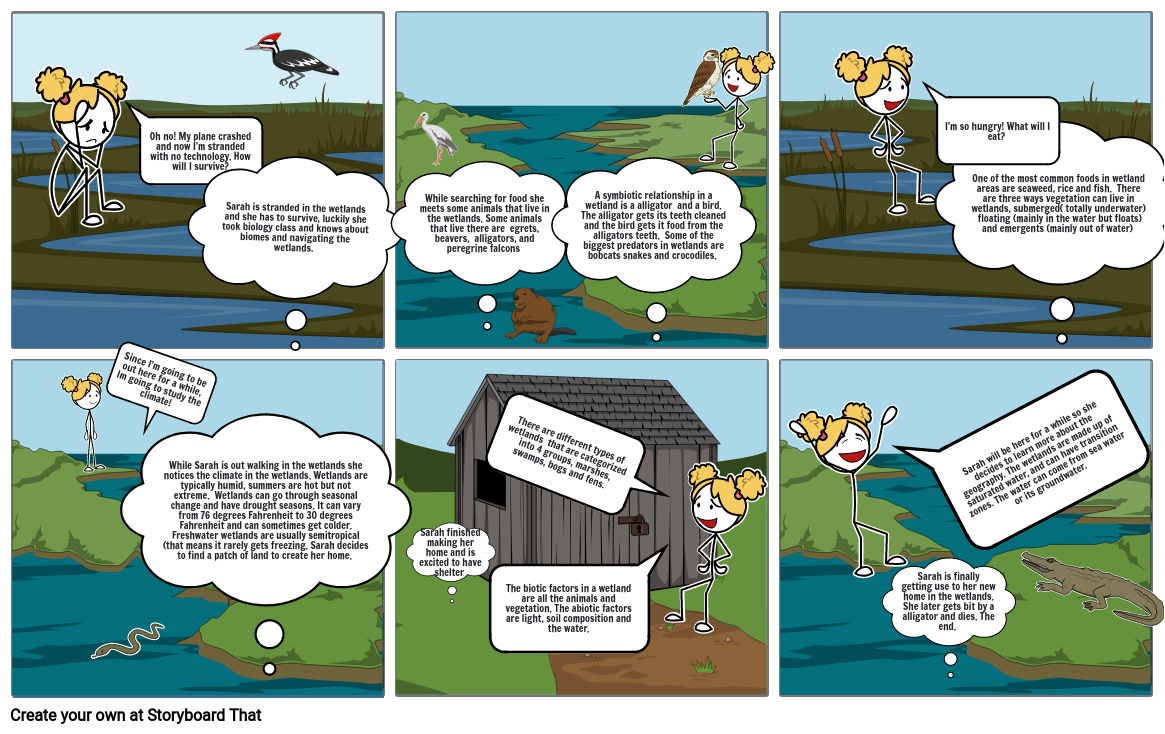Wetlands

Storyboard Text
- Oh no! My plane crashed and now I’m stranded with no technology. How will I survive?
- Sarah is stranded in the wetlands and she has to survive, luckily she took biology class and knows about biomes and navigating the wetlands.
- While searching for food she meets some animals that live in the wetlands. Some animals that live there are egrets, beavers, alligators, and peregrine falcons
- A symbiotic relationship in a wetland is a alligator and a bird. The alligator gets its teeth cleaned and the bird gets it food from the alligators teeth. Some of the biggest predators in wetlands are bobcats snakes and crocodiles.
- I’m so hungry! What will I eat?
- One of the most common foods in wetland areas are seaweed, rice and fish. There are three ways vegetation can live in wetlands, submerged( totally underwater) floating (mainly in the water but floats) and emergents (mainly out of water)
- Since I’m going to be out here for a while, Im going to study the climate!
- While Sarah is out walking in the wetlands she notices the climate in the wetlands. Wetlands are typically humid, summers are hot but not extreme. Wetlands can go through seasonal change and have drought seasons. It can vary from 76 degrees Fahrenheit to 30 degrees Fahrenheit and can sometimes get colder. Freshwater wetlands are usually semitropical (that means it rarely gets freezing. Sarah decides to find a patch of land to create her home.
- Sarah finished making her home and is excited to have shelter
- The biotic factors in a wetland are all the animals and vegetation. The abiotic factors are light, soil composition and the water.
- There are different types of wetlands that are categorized into 4 groups, marshes, swamps, bogs and fens.
- Sarah is finally getting use to her new home in the wetlands. She later gets bit by a alligator and dies. The end.
- Sarah will be here for a while so she decides to learn more about the geography. The wetlands are made up of saturated water, and can have transition zones. The water can come from sea water or its groundwater.
- Abiotic factors in wetlands are sunlight and sun composition and the most important factor for a wetland: water . Biotic factors in wetlands are all the animals and vegetation.
Over 30 Million Storyboards Created

